




















Published by
The London Cab Drivers’ Club Ltd.
Unit A202, Tower Bridge Business Complex
Tower Point, 100 Clements Road
Southwark, London SE16 4DG
Telephone: 020 7394 5553
E-mail for membership enquiries: E-mail: thelcdc@gmail.com Web: www.lcdc.cab
Editor: Grant Davis
The Badge is distributed free to the Licensed London Cab Trade.
For advertising enquiries please contact the office on 020 7394 5553 or E-mail: thelcdc@gmail.com
All advertising in The Badge is accepted under our terms and conditions. These are available at the LCDC office.
Before entering into any commitment, financial or otherwise, always remember to seek professional advice.
The views expressed in this publication are not necessarity those of the Editor or of the Management Committee of the London Cab Driver’s Club.
Contributions for publication are welcomed and should be sent to the Editor at the above address.
The London Cab Drivers’ Club Ltd.
Printed by Iliffe Print. T: 01223 656500 www.iliffeprint.co.uk
Over the past 36 years driving a cab, I’ve seen how our industry has evolved, facing both challenges and triumphs.
Each hurdle has taught us something valuable. Right now, we have another chance to grow and protect the future of our tradeparticularly at a critical hub like Heathrow Airport, which is essential to the health and success of our industry.
Heathrow has expressed interest in working closely with us to establish desks in the terminals, which would be a tremendous step forward.
Imagine the benefits: clear visibility for customers, streamlined services, and a unified presence that reflects the strength of the cab trade. For this vision to become a reality, we need everyone on board - working together under a shared vision.
The London Cab Drivers’ Club (LCDC) has already proposed plans that could be transformative if we come together to make them happen.
Right now, it’s crucial to set aside differences between organisations and focus on what’s best for our industry as a whole.
By creating a single office at Heathrow, we could strengthen our voice and presence in a way that would benefit every driver and organisation involved.
Just imagine: no more scattered offices, no more competing approaches - just one unified front.
To those in the trade organisations, it’s time to step up and collaborate. Let’s seize this chance, embrace unity, and build a stronger, more resilient future for the cab industry at Heathrow and beyond.
The time is now - let’s work together for a bright, thriving future.
Grant



Suite 12, Temple Chambers, 3, Temple Avenue, London EC4Y 0HP
We at the LCDC don’t often bang our own drum when it comes to helping our members with their legal troubles. A lot of the cases which come our way with members are quite sensitive and we respect their wishes to keep things in house and out of the paper which I can fully appreciate.
However, not only do Payton’s Solicitors offer our members a 24 Hour Duty Solicitor 365 days a year, but since getting involved with the Club, our solicitor Keima Payton has the distinction of having a 100% success rate in all her cases which she has handled on behalf of the Club’s members.
Keima Payton has a fearsome reputation in court and should ever the need arise you will find no one better able to fight your corner and save your Badge than Keima.
- Grant Davis, LCDC Chairman
Tel: 0207 405 1999 FAX: 0207 405 1991
By Charles Carisbrooke
In recent weeks, tensions between Transport for London (TfL) and members of the black cab trade have escalated over the ongoing issue of regulating taxi apps. Two key letters exchanged between Christopher Johnson, a representative of the taxi industry, and TfL’s Taxi and Private Hire General Manager, provide insight into the central arguments on both sides. Here’s a breakdown of the key points from this important debate.
TfL’s Position: Limited Authority Over Taxi Apps
In response to a pre-action letter from Mr. Johnson, TfL outlined its reasons for refusing to support a legal claim (under Part 8 proceedings) that sought court declarations regarding the regulation of taxi apps. TfL made three main arguments:
1. Issues Are Already Clear:
TfL stated that the questions Mr. Johnson wanted the court to address have already been answered in previous correspondence. Specifically, TfL maintains that:
• It is illegal for drivers to charge more than the metered fare.
• Booking fees, if charged by the app company and not by the driver, are likely legal.
• Equality laws (such as the duty to transport disabled passengers) apply from the moment a booking is made via an app, not just when the passenger is picked up.
2. Inappropriate Use of Part 8 Proceedings:
Part 8 claims are only suitable when the facts are agreed upon and only legal questions remain. TfL argued that since it isn’t involved in the contracts between drivers and app providers, it can’t agree on many of the facts that Mr. Johnson presented. This makes the legal process unsuitable for resolving these issues.
3. TfL Is Reviewing These Issues Internally:
TfL assured Mr. Johnson that it is actively looking into the practices of app providers, particularly regarding additional fees, and may issue future guidance. However, it emphasised that while it regulates taxis, drivers, and vehicle owners, TfL does not have authority over unlicensed
app companies. For this reason, TfL sees no point in taking the matter to court right now.
TfL also warned that if Mr. Johnson goes ahead with the claim, it will challenge the case in court and seek legal costs, arguing that the claim is unnecessary and lacks merit.
Christopher Johnson’s Response: TfL Has the Power to Act
In his reply, Mr. Johnson strongly disputed TfL’s stance, accusing the department of failing to take action against taxi apps like Gett, FreeNow, Bolt, and Uber. He argued that TfL is
3. Contradictory Regulation of App Companies:
One of Johnson’s most powerful arguments is that TfL is contradicting itself. On one hand, TfL claims it doesn’t regulate taxi apps, but on the other hand, it has passed laws (like section 40(5)(aa) of the London Cab Order 1934) that allow app companies to let drivers charge an additional £2 for bookings made through an app. Johnson sees this as proof that TfL has the power to regulate apps if it wants to—and could equally act to prevent apps from unfairly charging passengers.

misleading the trade by claiming it has no power to regulate these companies. His arguments include:
1. TfL Does Have Authority Over Apps:
Mr. Johnson pointed to the Greater London Authority Act 1999, which gives the Mayor (and by delegation, TfL) the power to take legal action against anyone acting unlawfully in the taxi sector. He highlighted a past case where TfL took action against an unlicensed individual, Brian Haugham, demonstrating that TfL can intervene even when the entity in question isn’t directly licensed.
2. Unlawful Pricing Practices by Apps:
Johnson argued that TfL should use its authority to stop app companies from charging fees that go beyond what the law allows. He pointed out that surge pricing and extra technology fees are unlawful under current regulations, yet TfL has taken no action to stop these practices. Johnson believes TfL’s failure to act has directly harmed the taxi trade.
4. Call for Legal Action and Cost Sharing:
Finally, Johnson reiterated his belief that the court should resolve these issues. He suggested both sides cover their own legal costs if the case goes to court, allowing the courts to clarify these complex regulatory questions without causing financial harm to either party.
What This Means for Black Cab Drivers
This back-and-forth between TfL and Mr. Johnson highlights the core issue of how taxi apps are regulated—or not regulated—by TfL. On the one hand, TfL argues that it can only regulate drivers and vehicles, not the apps themselves. On the other hand, Johnson argues that TfL has the power to step in and stop app companies from taking advantage of both drivers and passengers through unlawful pricing practices. The outcome of this debate will have significant implications for the future of the black cab trade.
If Mr. Johnson’s argument that TfL has the authority to regulate apps prevails, we may see
stricter rules imposed on companies like Gett and Uber, limiting their ability to charge extra fees or implement surge pricing. However, if TfL’s position is upheld, it could mean that app companies remain free to operate with limited oversight from the regulatory body that governs our trade.
This ongoing issue is one that all black cab drivers should watch closely. The future of how apps operate—and how much control we as drivers have over our fares and bookings—may well depend on how this legal battle plays out.
Key Takeaways:
• TfL’s Argument: It doesn’t regulate apps, and the issues Mr. Johnson raises have already been addressed. TfL is also reviewing app practices but believes that taking the matter to court is unnecessary.
• Johnson’s Argument: TfL does have the power to regulate apps and should stop companies from engaging in unfair practices. He argues that TfL has failed the trade by not acting sooner.
For the trade, this debate goes beyond legal technicalities—it’s about protecting the livelihoods of drivers and ensuring fairness in the way fares are handled in the age of app bookings.
Stay tuned for updates on this important issue as it progresses.
Both sides of the argument have valid points, but the answer to who is right depends on how the core issues are interpreted in terms of law, regulation, and responsibility.
TfL’s Argument:
TfL’s position is grounded in the distinction between what it can directly regulate (hackney carriages, drivers, and vehicle owners) versus what it cannot (third-party app companies).
Legally, TfL claims it doesn’t have the authority to regulate companies like Gett, Uber, and FreeNow, because these apps are not licensed under TfL’s framework in the same way that taxis are.
TfL is technically correct in asserting that their regulatory power covers only licensed entities (drivers and vehicles), not tech companies running apps. From an administrative and legal perspective, TfL may also be cautious about overstepping its boundaries, as it could risk acting beyond its statutory powers (“ultra vires”), which is something it has to avoid.
Christopher Johnson’s Argument:
Johnson takes a broader view of TfL’s role and responsibilities, focusing on public accountability and the overarching legal framework. He argues that TfL does have the authority to intervene, even with app providers, citing past instances where TfL took legal action against unregulated entities. His argument challenges TfL’s reluctance to regulate these companies and highlights the fact that TfL already allows apps to charge fees like the £2 app booking charge, suggesting they are exercising some level of control. Johnson essentially believes that if TfL can enable app companies to impose certain fees, they should also be able to prevent these same companies from exploiting consumers with surge pricing and similar practices.
Who is More Persuasive? In terms of practicality and moral responsibility, Christopher Johnson’s argument appears stronger. He highlights a significant inconsistency: TfL claims it has no authority over taxi apps, but at the same time, it has allowed these apps to impose certain charges through cab orders. This suggests that TfL does have the power to regulate at least some aspects of how these apps operate in relation to fares. Moreover, Johnson’s broader view of TfL’s responsibility to the trade and to consumers points out that if apps are part of the taxi industry, then TfL should ensure they are operating within the law.
Legal vs. Moral Responsibility:
• TfL is likely correct in a narrow legal sense when it says it doesn’t have the authority to fully regulate taxi apps.
• However, Johnson’s argument that TfL could (and should) do more to protect the trade and consumers from unfair practices like surge pricing makes a compelling case for moral and regulatory responsibility.
Ultimately, Johnson’s call for judicial clarity is a reasonable way forward. If the court rules that TfL has more power than it claims, it could force TfL to take a more active role in regulating taxi apps. Conversely, if TfL’s interpretation is upheld, it will make it clear that broader legislation is needed to protect drivers and passengers from these issues.
Poppy Cabs, the Remembrance Sunday free taxi service, is preparing for the 2024 service on Sunday 10 November.
This year celebrating 15 years’ service, Poppy Cabs has become an integral part of the decision to attend the annual remembrance Service and Parade in London. Indeed, especially for those wheelchair users, it would be almost impossible to attend without the help provided by London’s taxi service.
Poppy Cabs offers more than 1,000 free taxi journeys in just 2 hours for the veterans going to and from the Cenotaph service with drivers, knowledge students and family members helping to marshal the event. Many drivers give up their day entirely for this service with others providing free service from the normal taxi ranks.
To support the Poppy Cabs initiative taxi drivers are invited to the ‘turn up and go’ locations -
• Victory Services Club
• Union Jack Club
• Kings Cross (main line)
• Liverpool Street
• Paddington (main line)
• Fenchurch Street
• London Bridge
• Victoria (main line)
• Victoria Coach Station
• Waterloo (main line)
• Euston
• Marylebone
In addition to the ‘hub’ locations there are a number of pre-booked special pickups for wheelchair users, those with ambulatory problems and some larger groups. The majority of veterans are taken to Admiralty Arch for the service and parade but some are taken to other locations such as Westminster Abbey, Hyde Park Corner or Grosvenor Gardens where there are special services.
Return journeys start from Westminster Bridge where taxis are lined up to take the veterans back to their various locations with a
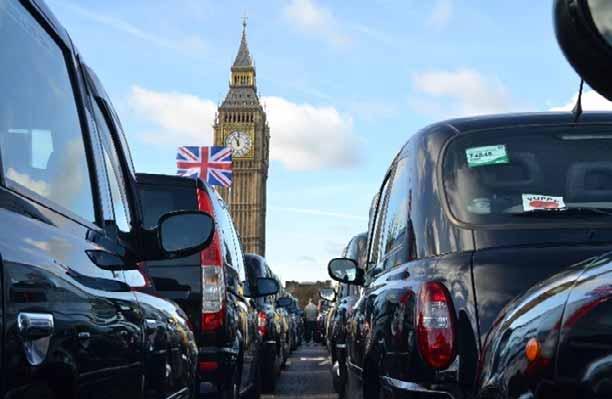
small pickup point at Admiralty Arch for wheelchair users.
The drivers provide their taxis and their time free of charge to the veterans and the Poppy Cabs initiative could not operate without their generosity.
The independent coordinator is London cab driver
Mike Hughes, who matches drivers with special need users. On Remembrance
Sunday there are a number of drivers, knowledge students and family members who marshal the event, helping veterans into the taxis at each pick up point to ensure a smooth journey for those attending the Remembrance Sunday service and parade.
Mike Hughes, Poppy Cabs Coordinator said “In 2009 the taxi trade didn’t realise just how much our veterans
to get to and from the annual
Remembrance Sunday service and parade.
What started with 15 taxis lined up on Westminster Bridge to mark the 11th hour while waiting for veterans, has grown into
something supported by several hundreds of taxi drivers every year. The Poppy Cabs apolitical and non-political ethos is one which encourages all members of the taxi trade – drivers, family members, suppliers and general supporters – to come together to help honour our veterans. The emotional atmosphere is something that you cannot put a price on. It’s amazing to think that this is our 15th year. In that time, we’ve grown to the point where we are considered an essential part of the event for those attending.
Funded entirely by the drivers themselves, this is seen, alongside events organised by The Taxi Charity for Military Veterans, as one of the highlights of the taxi trade year, when
taxi drivers make a special effort to pay back part of the debt owed to our military veterans.
You can follow Poppy Cabs on X @PoppyCabs
For further information or to volunteer, please contact Mike Hughes by SMS on 07973 430022 or email mike@mikehughes.org.uk
Poppy Cabs was founded in 2009 by a small group of London taxi drivers to provide free transport in London for veterans on Remembrance Sunday. The initiative relies on the generosity of London’s cab drivers who volunteer their time and taxis and their friends and relatives who help to move veterans from mainline stations and military clubs to the Cenotaph.
Enamel Poppy Cab badges have to date raised over £25,000 for the Royal British Legion and the Taxi Charity for Military Veterans.


Dear Driver,
I am writing to you to share the news that Addison Lee is being acquired by ComfortDelGro, a leading multi-modal mobility operator.
With huge expertise gained through their operations in 12 countries and a global network of over 40,000 vehicles, we are confident they are the perfect complementary partner to drive our next phase of growth and guide our expansion beyond the London and the UK.
As many of you know, ComCab London and ComfortDelGro have a strong track record of collaboration and success,
with ComfortDelGro previously owning ComCab prior to Addison Lee.
They share our philosophy, vision, and ambition for the Addison Lee brand and, by joining ComfortDelGro, we will have access to new regions in the UK alongside invaluable expertise and technologies from the wider ComfortDelGro business.
In 2021, the management team and I acquired ComCab London with a simple goal – to meet the challenges presented by the COVID-19 pandemic and bring together the best of the black taxi and private hire industry.
Together, Addison Lee and ComCab London have become a formidable

competitor in London, offering quality, safety, and service at scale as London’s most iconic taxi and private hire fleet.
Going forward, it is very
much business as usual. I am happy to confirm that I will remain as CEO, ready to drive the next phase of our journey, alongside the key management team. I also want to reassure you that job
allocations and daily operations will not be impacted.
Today’s announcement is testament to the quality of our service that you deliver every day, and I wanted to say thank you for your ongoing support.
The next chapter is an exciting one and it will provide opportunities for all drivers. As the integration moves ahead, we will provide you with regular updates but if you have any questions in the meantime, please do get in touch with the fleet services team who will be happy to provide more information.
Best wishes, Liam
Griffin
By Political Officer
Dan O’Regan
The Rotherham child sexual exploitation scandal remains one of the most shocking safeguarding failures in modern Britain
Between 1997 and 2013, approximately 1,400 children were abused, with private hire (PH) vehicles playing a key role in transporting the victims to sites of exploitation.
Professor Alexis Jay’s 2014 report revealed that local authorities and law enforcement were aware of the abuse for years but failed to act due to concerns about race, reputational damage, and social standing.
Private hire drivers were central to this scandal, often referred to as “taxis” in the media, despite the distinct difference between PH vehicles and Hackney carriages (black cabs). These private hire drivers were operating under low standards, with minimal oversight, no safeguarding training, and no additional driving assessments to ensure they were fit to be on the road. The revelations from Rotherham highlighted the
dangers of having underregulated and under-trained drivers responsible for the safety of passengers, particularly vulnerable individuals like children.
In response to concerns about safety and regulatory compliance, TfL introduced the Safety, Equality, and Regulatory Understanding (SERU) test, which will become mandatory for taxi and private hire drivers by October 2025. This test is designed to ensure drivers have a solid

understanding of key safety and equality principles, as well as their regulatory obligations. Given what occurred in Rotherham, the SERU test is undoubtedly a step in the right direction. It addresses some of the gaps in training and
knowledge that allowed for exploitation to occur unchecked. Drivers will be tested on their understanding of safeguarding, which is critical for preventing future scandals.
However, as positive as the SERU test may be, it does not go far enough.
One of the key failures in Rotherham, and across the private hire sector more generally, has been the lack of adequate driver testing. Hackney carriage (black cab) drivers were required to pass strict driving tests until 2016 when the DVSA cancelled them. However, private hire drivers have never been required to take any additional driving tests beyond the basic requirements for obtaining a driving licence. This is deeply concerning, especially given that many drivers come into the trade with licences from other countries, which may not meet the same standards as those issued in the UK.
The Mayor of London and TfL
have long championed a Vision Zero policy aimed at reducing the number of people killed and seriously injured (KSI) on the roads. Yet, without proper driving tests for both black cab and private hire drivers, this vision is undermined. Narrowing road spaces, reducing speed limits, and manipulating statistics will not solve the root issues. Drivers must be properly trained and tested to ensure they meet the highest standards of road safety and professionalism.
Furthermore, this is not just about preventing tragic accidents or safeguarding vulnerable passengers; it’s also about ensuring that drivers are treated fairly. Many private hire drivers are exploited by app companies that operate with low standards and minimal oversight. Requiring all drivers to pass comprehensive driving tests would not only improve public safety but also help raise the status of drivers within the industry. It would ensure that only those with the proper skills and understanding of UK roads are allowed to operate, thus preventing exploitation by unscrupulous companies looking to hire under-qualified
drivers for lower wages.
Time for Action
TfL’s introduction of the SERU test is long overdue, but it’s not enough on its own. The Rotherham scandal should have been a wake-up call for the entire industry. If TfL is serious about protecting passengers and fulfilling its Vision Zero goals, it must reinstate mandatory driving tests for both black cab and private hire drivers.
The lessons from Rotherham are clear: safeguarding, driver competence, and regulation are all intertwined. We cannot afford to wait any longer to implement these changes. For the safety of the public, especially the vulnerable, and for the future of the taxi industry, driving tests must be mandatory once again.
Now is the time for TfL and the Mayor of London to act and set an example for the rest of the country. Only by raising standards across the board can we ensure that the horrors of Rotherham are never repeated and that the taxi industry remains a pillar of trust and safety for all Londoners.


Dear Chancellor and Secretary of State for Transport,
We, the undersigned, are writing to you concerning the future of the taxi trade at a crucial - and concerningmoment for drivers and the sector as a whole here in London, and with a request for action in the upcoming Budget.
The number of taxis and black cab drivers in London are both falling at an unsustainable rate. We are experiencing a net loss of c.1,000 drivers per annum from the trade - between 2012 and 2024 there was a 37% fall in the number of taxis on London’s roads. It’s why we urgently need to find ways to improve driver recruitment and retention.
One of the biggest hurdles to becoming a London licensed taxi driver is purchasing a new vehicle. The only vehicle which can currently be newly licensed to operate in London is the LEVC TX - an iconic vehicle which retains the classic black cab design but is a zeroemission capable, range extended electric vehicle.

Owing to TfL’s high specification requirements it’s unlike any other vehicle on the road and the reason black cabs really are the gold standard in global taxi travel.
That’s why, in the run-up to the Budget, we are writing to you with a single, unified voice in support of two policy proposals designed to ensure that London’s black cab remains affordable for drivers.
The first is the continuation of the Plug-in Taxi Grant (PiTG), which is only guaranteed until April 2025. There are currently 8,700 ZEC taxis on London’s roads. A further 6,000 vehicles still rely on fossil fuels and need to come off the road by 2030 to meet the Mayor of London’s net zero target for the capital. The PiTG continues to be instrumental in supporting drivers and fleets to make this transition and protecting driver’s livelihoods. We urge you to extend the grant for at least another 12 months (until March 2026) to support further progress and ensure no one is unfairly left behind.
The reduction in the grant from £7,500 to £6,000 in April 2024 has already directly impacted new cab sales which have shown a month on month reduction of over 50 per cent
compared to 2023 figures. This has slowed down this important transition and the momentum is now going in the wrong direction, as drivers and fleets can no longer make the numbers add up to justify the investment. Reduced investment by fleets also means less vehicles available to rent and with insurance and maintenance costs soaring, rents for those that are available can be prohibitive. As a result, hundreds of drivers have already been left with no choice other than to stop driving a taxi. The removal of the grant entirely would exacerbate these concerning trends.
Our second ask is to extend the VAT exemption for adapted motor vehicles for disabled people to taxis, in recognition of their vital role in supporting disabled passengers in the capital (and across the UK).
Black cabs are the capital’s only door-to-door service that is fully accessible: just a third of Tube stations and half of Overground stations are currently step-free. It’s why so many passengers with mobility issues rely on black cabs for crucial journeys. But the high vehicle specification comes at a cost, and that cost is ultimately borne by drivers.
To ensure these vehicles continue to serve Londoners and the capital’s visitors, it’s vital they remain affordable. In 2018, when the ZEC requirement was brought in for London taxis, there was far more support available and the comparatively low running costs were a significant advantage for early adopters. Unfortunately, many of the financial incentives and advantages for drivers have since dwindled. For example, TfL’s delicensing scheme closed soon after the pandemic, and grants for home chargers are no longer available, while public electric charging costs have almost tripled and the cost of financing a vehicle has risen significantly with higher interest rates.
Many drivers and fleets with internal combustion engine (ICE) taxis coming up on their newly imposed age limits, are now facing the bleak prospect of being unable to replace them, which would be catastrophic for London’s iconic black cab trade and the passengers we serve.
As you will be aware, London leads the way nationally in these matters and if we can not facilitate a successful and just transition to net zero for London’s licensed taxis it is unlikely to succeed elsewhere in the UK.
Supporting drivers to buy new EVs will play an important role in driver retention, it will help improve London’s air quality and will ensure the continued ready availability of wheelchairaccessible taxis providing doorto-door transport across London.
We hope you will give serious consideration to these proposals.
Yours sincerely,
Tim Arnold, Regional General Manager, FREENOW
Steve McNamara, General Secretary, The Licensed Taxi Drivers’ Association
Jim Kelly, Chair, London & Eastern Cab Section, Unite the Union
Trevor Merralls, General Secretary, United Cabbies Group
Chris Allen, Managing Director, London Electric Vehicle Company (LEVC)
Tony Marson, Managing Director, ComCab
Grant Davis, Chairman, London Cab Drivers Club
Matteo de Renzi, Chief Executive Officer, Gett


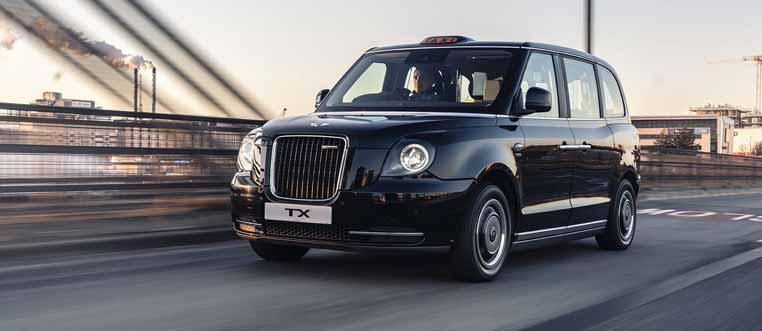
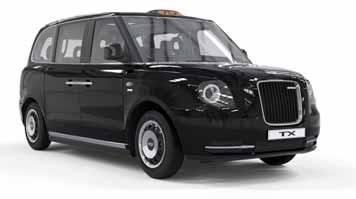
- Central London location
- Back up and support
We are still renting a limited amount of diesel taxis


TfL issue warning to volunteers erecting poppies on lampposts!
Just when you thought TfL couldn't get any worse, and especially after the data leaks earlier this year, followed more recently by the scandal of PCNs sent out to virtually every London Taxi driver (who are exempt for ULEZ and congestion charges) they've actually gone and done something even more disgraceful.
Believe it or not, TfL wanted to charge volunteers for putting up poppies of remembrance on red route Lamp posts.
But thanks to an intervention by GLA Councillor Thomas Turrell, they now appear to have backed down. TfL now saying this was an ”administrative error” (meaning, they’ve been found out, again) their most popular excuse. So everyone can now enjoy seeing the poppies without interference from TfL. If you’re offended by the sight

of a poppy, then perhaps this isn’t the country for you.
Let's not forget the reason Poppy Cabs were first started as a group.
Taxi drivers from the newly formed United Cabbies Group started offering their service to help military veterans attend Whitehall on Remembrance Sundays, after TfL chose to close most of the local Underground Stations for upgrade work, that particular weekend. Such a terrible decision again from
the planners at TfL.
But this wonderful group of London Taxi drivers got together and offered their services (free of charge) allowing many veterans who thought they wouldn’t make it, to be picked up and taken by Taxi to the service.
This proved to be so successful that it was decided to make this an annual event under the Poppy Cab banner, which has now been running for 15 years.



Although many drivers (plus family and friends) put themselves out year after year, one man stands head and shoulders above the crowd. He spends all year, arranging this logistical nightmare into a wonderful problem free event. That man is Mike Hughes.
Drivers regularly take to social media after the event and referred to Mike as a 'Hero', but he always comes back with the same reply saying, "I’m not the hero, the veterans are the hero’s and that’s why we all help out on



this special day".
TAXI LEAKS EXTRA BIT: Last year, after helping out, arranging Poppies on Lampposts, Ian Duncan Smith made a post on his Twitter (X) account: "I have no problem with Gary Lineker using free speech to make his points." Gary had said everyone one should be free to demonstrate on any day of the year. "However, when it comes to Remembrance Sunday his comments show a lack of understanding. Remembrance weekend is for this country, and for those of us who served, to remember those who never came back with gratitude and reflection.
"I particularly remember one man, a dear friend of mine, who was tortured by terrorists, his body dismembered and his parents died never knowing where he lay.
"People can protest on any other day of the year, but on this day of days, we owe those who served to protect us and our freedoms, this one quiet moment of love, memory and prayer.
"If virtue signaling has a time and a place, neither are on Remembrance Sunday."






“The Most Beautiful Strip Club in the World”
Earn £35 per guest for dropoffs *even regulars!* No Excuses or Exceptions Ever Paid weekly by Paypal or transfer
Join our driver group; text +44 777 143 2779 for a chance to WIN £500 cash on Friday 20th December







Went with my partner, absolutely out of this world, nothing remotely comparable to other strip clubs in London.




Definitely one of my favourite place in London. Everything is so beautiful, great cocktails and music.
Sadiq Khan's London 'Night Czar' has quit following nearly eight years in the job after months of intensifying criticism for flying around the world on a series of trips.
Amy Lamé, who was earning £132,846-a-year, was slammed for her globe-trotting adventures while London became ranked as the UK's worst city for a night out and more than 3,000 venues in the capital closed under her watch during the pandemic.
The 53-year-old went on at least 12 foreign jaunts in her role - with trips to 'build partnerships', study nightlife and attend events in Mumbai, Boston, Berlin, Sydney, Melbourne, Bologna, Madrid, Copenhagen, Paris, Tallinn and even Lviv in Ukraine.
Among her trips was one to Australia to meet fellow 'night czars' from around the world; another to Spain to present
Mr Khan's nightlife initiatives; and a third to Italy to give the keynote speech at the 'General State of the Night' conference.
Most of the visits abroad by the writer, comedian and broadcaster were not paid for by the taxpayer and were instead funded through private donations. But according to her expenses, she did claim for flights and accommodation for a trip to Berlin.
City Hall previously insisted the trips were essential to 'share best practice from London, learn from other cities, build partnerships and demonstrate how London is leading the world with our approach to supporting all aspects of life at night'.
The 6Music host - who resigned just hours before a damning report was due to come out calling for her to quit - was also criticised for taking

'sick leave' while still presenting her BBC show and was accused of failing to show up at meetings to improve the capital's nightlife.
Ms Lamé became the UK's
first ever Night Czar in 2016 when she was appointed by Mr Khan soon after he became Mayor.
She has become one of his key allies and insisted earlier
this year that she was worth her six-figure salary despite the fury over her foreign trips.
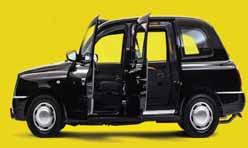




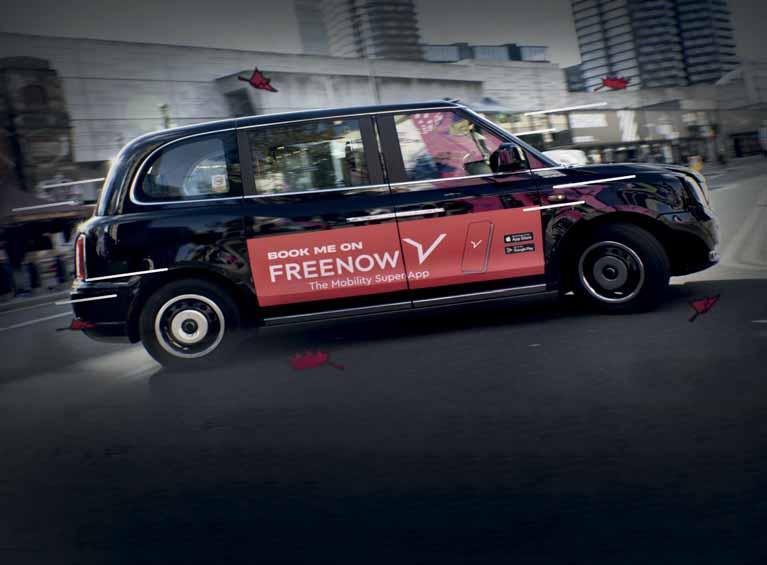
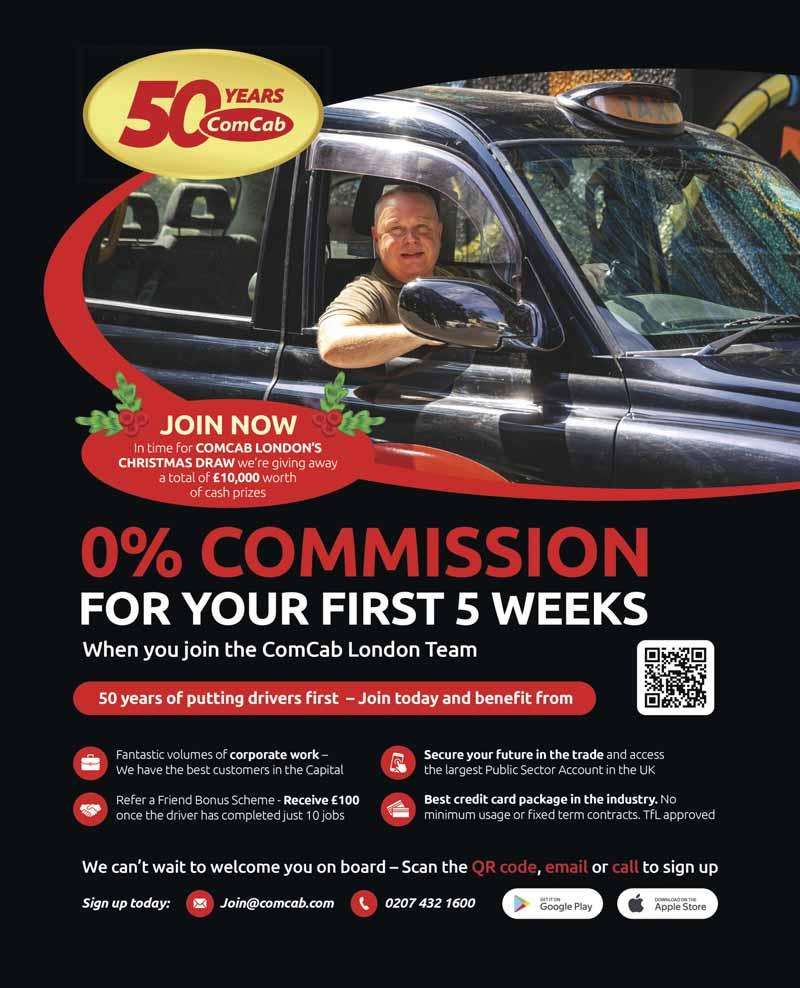



hard on the trade’s behalf for a fairer, and more safer future at Heathrow.
n RANKS AND HIGHWAYS
The LCDC attend the Joint Ranks committee, working hard for more ranks and more access for the taxi trade in London.

Mercedes to deliver a vehicle that meets our standard as a London taxi driver. Recently we have held meetings to work against the ULEZ strategy and the introduction of taxi age limits.
n CLUB PROTECTA

n 24 HOUR DUTY SOLICITOR EXCLUSIVE TO THE CAB TRADE
Your 24 Hr duty solicitor hotline membership card.
Peace of mind 24 hrs of the day.
n LEGAL COVER
Our fantastic team of City Of London based solicitors and barristers, experts in Hackney Carriage and road traffic law.
n COMPLAINTS AND APPEALS
As a member of the LCDC, we will deal with any complaint that has been made against you by members of the public.
Also we will attend the LTPH with you on any personal appeals that would affect your licence.
n HEATHROW AIRPORT REPRESENTATION
With our reps at the airport working
n CAB TRADE ADVICE
All members can call the office for any information or up to the date news on any trade related subject.
n TRADE’S FUTURE
The Club worked tirelessly in bringing in the green & yellow identifiers to the taxi trade. And are always working hard to protect our future.
n CAB TRADE REPRESENTATION
We are working hard to work with members of the GLA and also politicians to fight our corner against TFL and was a major influence in the recent “ future proof” document.
n VEHICLE MANUFACTURERS
The Club works alongside LTC and
To help drivers who have acquired twelve points keep their licence.


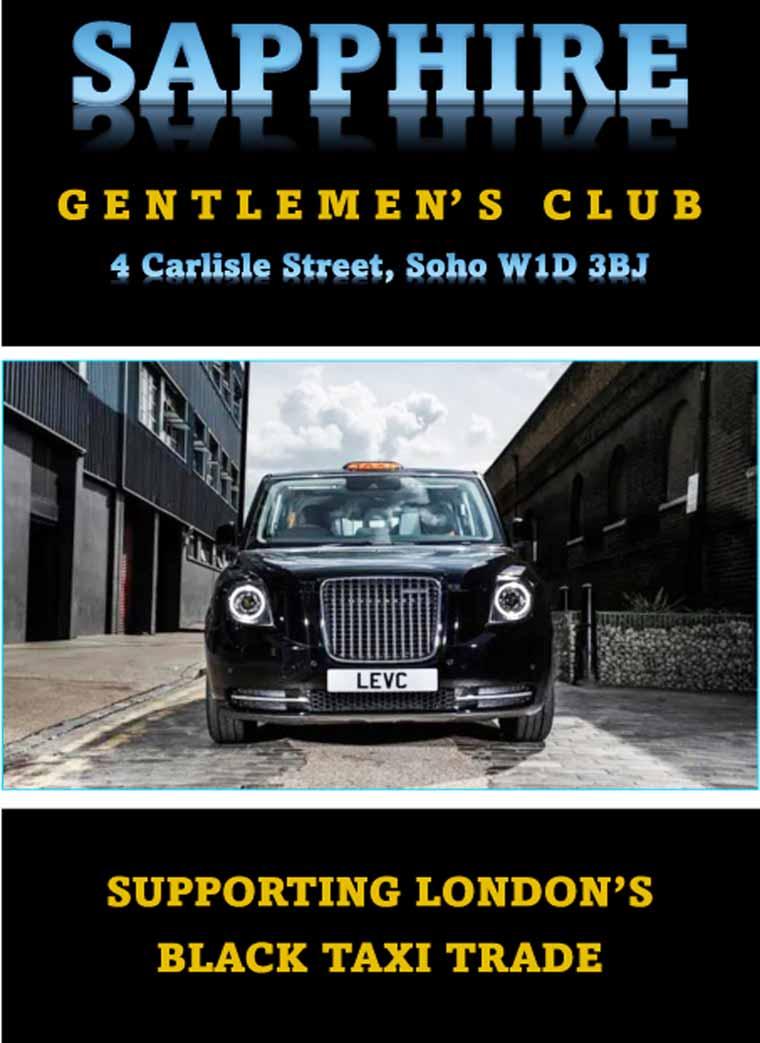


Friday 20th November saw the 29th trip to Disneyland Paris. Preparations for the trip started the previous day with all the drivers visiting the NSL Test Facility in Rainham to have the sponsor stickers applied (many thanks to Marston Holdings for allowing the use of their facility) and collect the information for their pickup and family for whom they will be the host for the weekend.
This year is the 30th Anniversary of the charity but the 29th trip to Disneyland, as we missed 2 trips due to the pandemic. The first trip to Disneyland (Euro Disney as it was called back then) took place in 1994 with 25 taxis taking part in that inaugural trip. This year 94 taxis transported families to Disneyland Paris.
The children that are invited to come on this trip are chosen by the hospitals that the charity works with, all are suffering with some form of life limiting illness and can only come on the trip because of all the support organised by the charity such as the London Ambulance Service, Paramedics, the Doctors and Nurses from the hospitals that we take.
On the morning of the trip, after collecting their families from, all the taxis make their way to Canary Wharf to the Pelagon (formerly East Winter Gardens) for the Big Breakfast where everyone tucks into a full English.
After the formalities where the Lord Mayor wishes us all a safe trip and an address from the Master of the Worshipful Company of Hackney Carriage Driver (who organise the trip) the
P&O Spirit of Calais very kindly provided free of charge by P&O Ferries who also laid on entertainment for the children during the crossing.
After the 90-minute crossing the taxis leave the ship, horns blasting again and we head out of the port of Calais and drive about 2 hours to our fuel stop at Aire de Coeur des Hauts-deFrance where all of the local people come out to entertain the children while the taxis and support vehicles are refuelled. Then after a short break we set off again to Disney.
treated to playing with the Police cars and bikes, sounding the sirens and revving the engines, which can be quite loud and probably wakes the others

and back from London, The Sponsors who donate £1600 per Taxi to make this event possible, LEVC for sponsoring the fuel, children’s spending money, drivers spending money and much more. The Doctors and Nurses from the hospitals for their support in looking after the children. Also all of the people who come out to wave and cheer us on. The people of Assevilllers who entertain the children at teh fuel stop.
call goes out for everyone to make their way back to the taxis after collecting packed lunches (kindly supplied by Marriott Hotels) for the trip and the children’s spending money which is kindly donated by LEVC.
At 7:00am the Lord Mayor of the City of London cuts the ribbon signalling the start of the Children’s Magical Taxi Tour, the taxis start to move with horns blasting escorted by the City of London Police, Kent Police and the Gendarmerie Nationale assisted by the Metropolitan Police who closed some of the roads to ensure the smooth start to the trip leaving Canary Wharf.
The children cannot believe that
We finally arrived at the Hotel Cheyenne at Disneyland Paris around 7:20 pm local time and after finding our rooms everyone descended upon the restaurant to eat, one whole section of the restaurant is closed off for our use only which makes it a lot easier to find a seat and keeps the children from wandering off.
Saturday is spent in the Disneyland Park where the children get to bypass the queues and enjoy as many of the rides as possible. It is when you see the smiles on the children's faces as they enter the Disneyland Park that makes this whole trip worthwhile, their excitement is infectious and is the reason that all of the drivers give up their time and the use of

we are getting a Police escort all the way to Disney, seeing the Police motorcyclists go flying past to close the roads ahead makes them feel really special, one commented that it is like being Royal, and these children really do deserve to be made to feel special, as normality for them is hospital visits, treatment and therapy.
The journey down to Disneyland takes us through the Blackwall Tunnel (which is very thankfully closed to allow us through) along the A2, M2, A2 to Dover where we boarded the
their taxis absolutely free of charge.
After a fun filled day in the Disneyland Park it is time to dress up for the Gala Dinner for the children that is held at the New York Hotel, everyone is treated to a slap up meal and all of the support services are thanked for taking part in the trip. And then everyone gets on the dance floor for a fantastic party. Then it is off to bed for the early start on Sunday morning.
After breakfast, and before we leave Disney, the children are
staying at the hotel, then its everyone back to their taxis ready to leave for 9:00am for the long drive back home.
We once again stop for fuel on the return trip at Aire de Coeur des Hauts-de-France, where lunch is also distributed for everyone and then off to Calais to catch the P&O Liberte back to England. Once on board everyone tucks into Fish & Chips kindly supplied by P&O Ferries and the children are also entertained again.
Arriving at the port of Dover all the Taxis very loudly disembark the ship and after a quick stop on the dockside to collect the European Driving kit, the convoy breaks up and the drivers return their families either to where they were picked up, or many take them home to their front door.
As a driver on this trip it really gives you a great sense of humility and you feel as though you have really given something back to the community. It is a fantastic event to take part in and makes you feel really good inside.
Being part of the team that looks after the social media for the trip, I get to see the messages from the families that have been lucky enough to come along, and they are all full of praises for the drivers, the committee who organise the trip and everyone involved, and it really does seem to make a difference to these children’s lives.
There are so many people that need to be thanked for making this trip possible every year, Martson Holdings/NSL for the use of their testing station on the Thursday, The London Ambulance Service for their unwavering support every year, The AA for their breakdown services every year, The City of London Police, Kent Police, Gendarmerie Nationale for the sterling work escorting the convoy all the way to Disneyland
Also a special mention for the 3 LEVC warranty agents who always go above and beyond to effect any repairs and check the taxis over before the trip, LEVC Brewery Road, E1 Taxis and Ascott Cab Company. Arscott’s changed an ERAD and an engine on 2 cabs last minute so that they were able to take part in the trip.
The committee who work tirelessly throughout the year going through every minor detail to ensure the trip runs smoothly and without a hitch. And of course, last but not least, all of the drivers who end up losing 5 days’ work to take part in the Magical Taxi Tour, without the drivers this trip would most definitely not be possible.
You can follow the Magical Taxi Tour on social media, all of our accounts are @MagicalTaxiTour or via our website www.magicaltaxitour.com where you can also find a link to donate via Just Giving.
This trip has been described by the City of London as the highlight of the Livery Companies charity calendar which it most certainly is!
The charity also hold a Grand Christmas Gala Dinner at the Marriott Hotel West India Quay to raise money for the trip, this year it is on Saturday 14th December and there are still a few tickets available. Three course meal, wine and music from a live band with a raffle and auction during the evening. Tickets are £85 per person and can be obtained from wndysorrell@magicaltaxitour.com
I am also always being asked how a driver can get to take part in the trip, so if you are interested in taking part please email Carlos transport@magicaltaxitour.com and he will put you on the waiting list. If you are considering putting your name down, I can honestly tell you that after 25 years being involved I still look forward to the trip and thoroughly enjoy taking part.
Until next month, please stay safe, be nice and most of all Be Lucky
You start on 20% commission each Monday from 00:00 Complete 10 jobs, your
By Daniel O’Regan
London’s black cab trade is at a crossroads. Once a symbol of the city’s identity, black cabs have found themselves increasingly squeezed out by rising costs, stringent regulations, and the explosion of private hire vehicles (PHVs), largely driven by app-based companies like Uber.
The Ultra Low Emission Zone (ULEZ) and its associated costs have pushed many drivers to the edge, while the overwhelming growth of PHVs has flooded the market, reducing the number of fares available for black cabs.
With the Mayor of London facing a growing outcry from cab drivers and other stakeholders, it is clear that urgent action is needed to ensure the survival of this iconic industry. Based on a close analysis of both the Taxi and PHV data and the Jacobs Report’s predictions, here are the key points that must be included in any new plan if the black cab trade is to survive and thrive in the years to come.
reaching over 117,000. Today, while the number of operators may have stabilised, the sheer volume of PHVs on London’s roads is unsustainable, particularly in central London, where many compete directly with black cabs.
The original Jacobs Report failed to predict the scale of this
Jacobs did not foresee the extent to which this imbalance would affect the market, particularly as app-based PHV services have grown in popularity. Today, Londoners increasingly turn to these cheaper alternatives, putting the future of black cabs in jeopardy.
Recommendation: The Mayor
nightlife areas. Additionally, stricter enforcement against PHVs who block access to these areas is essential. TfL should ensure that taxi ranks remain exclusive to licensed black cabs and introduce new digital systems that allow passengers to know where ranks are located.

The ULEZ and the reduction in the maximum age of noncompliant taxis from 15 to 10 years has forced many black cab drivers into difficult financial decisions. While the need for cleaner air is undeniable, the abrupt reduction in vehicle age limits has had a disproportionate impact on drivers, particularly those who are self-employed and older.
Jacobs forecasted that a third of taxis would need to be replaced sooner than expected. The reality has been even harsher, with many drivers forced out of the industry altogether.

One of the biggest challenges facing black cab drivers today is the transition to electric vehicles. Jacobs’ 2014 report estimated that new, zero-emission capable taxis would cost around £40,000. In reality, today’s electric cabs, such as the LEVC TX, cost more than £70,000— nearly double the original prediction. This vast difference has left many drivers unable to afford the switch, particularly older drivers nearing retirement, who cannot justify such a large investment.
Recommendation: The Mayor must create a much larger and more effective financial support package for taxi drivers transitioning to electric vehicles. While current grants exist, they are insufficient to cover the real costs of these vehicles. A new subsidy program should be introduced that covers a greater proportion of the vehicle cost, especially for drivers who are already struggling. Additionally, a low-interest loan scheme specifically for taxi drivers could help spread the financial burden.
The exponential growth of PHVs has been one of the most destabilising forces in the taxi trade. In 2010, there were fewer than 60,000 PHV drivers in London. By 2017, that number had more than doubled,
that most PHVs would operate outside central London. Instead, we’ve seen a huge concentration of PHVs in the very areas where black cabs are most in demand, with many parking illegally around transport hubs, causing congestion and taking potential fares from licensed taxis.
Recommendation: The Mayor needs to introduce stricter limits on PHV licenses to control the number of vehicles entering central London. Implementing a cap on the number of PHVs operating in specific zones of the city, particularly in central areas, would help redress the imbalance. Additionally, TfL should be given stronger powers to enforce illegal parking and idling by PHVs, which exacerbate congestion and pollution.
3.
Black cabs have long been held to higher regulatory and safety standards than PHVs. While this has helped maintain the high quality of service provided by London’s taxis, it has also created an uneven playing field in an increasingly competitive market. PHVs have taken advantage of this disparity by offering cheaper fares with fewer regulations, eroding the black cab trade.
standards for PHVs to ensure they meet the same safety, environmental, and accessibility criteria as black cabs. PHV vehicles should be required to comply with the same stringent emissions rules, accessibility requirements, and safety checks as black cabs. By holding PHVs to the same high standards, the playing field will be levelled, and passengers will receive better, more consistent service across both sectors.
One of the advantages black cabs have traditionally held over PHVs is their ability to pick up passengers at ranks and be hailed on the street. However, with increasing congestion and the growing number of PHVs circling key areas, black cabs are finding it harder to secure pick-up points, especially near busy transport hubs and key central locations.
PHVs illegally parking or waiting for fares near these locations not only create congestion but also take away the crucial advantage that black cabs have over prebooked minicabs.
Recommendation: The Mayor should introduce more protected taxi ranks across London, especially in areas with high demand, such as transport hubs, shopping districts, and
Electric taxis are central to London’s future as a greener city, but the infrastructure to support them is still lacking. Many drivers who have switched to electric cabs struggle to find fast-charging points, especially in central London. This makes it difficult to operate efficiently and adds extra pressure to an already expensive and demanding business.
The Jacobs Report anticipated a relatively smooth transition to electric vehicles, but this has not been the case. Without the necessary infrastructure in place, even drivers who want to make the switch are held back by practical limitations.
Recommendation: The Mayor should invest heavily in expanding fast-charging infrastructure across London, particularly in areas where black cabs operate most frequently. Priority should be given to installing charging points at taxi ranks, allowing drivers to recharge during their downtime. TfL should also work to create exclusive charging zones for black cabs, ensuring that they can access the necessary facilities without competition from other EVs.
6. Reassessing ULEZ and Age Limit Rules
Recommendation: The Mayor should consider revisiting the 10-year age limit rule for black cabs. Extending the age limit for compliant vehicles—those that meet certain emissions standards—could offer muchneeded financial relief for drivers. For older drivers nearing retirement, a more flexible approach could prevent them from being forced out of the industry prematurely. Any changes should be aligned with a continued commitment to reducing emissions, but with a more phased and supportive approach for drivers.
Conclusion: Time for a Balanced Plan
The black cab industry is at risk of disappearing unless immediate action is taken to protect and modernise the trade. The ULEZ, while necessary for improving air quality, has placed an unfair financial burden on taxi drivers, especially with the price of electric cabs being much higher than TfL and Jacobs initially predicted. Combined with the unchecked growth of PHVs, black cabs are struggling to compete on both price and availability.
The Mayor’s new Taxi and PHV plan must focus on levelling the playing field between taxis and PHVs, providing greater financial support for black cab drivers, and ensuring that the necessary infrastructure is in place for a smooth transition to electric vehicles. With these changes, London’s black cabs can continue to be a vital part of the city’s transport system, while maintaining the high standards of service and accessibility that have made them a global icon.
Without a bold, balanced plan, we risk losing one of London’s most important and recognisable professions. It’s time for the Mayor to step up and ensure that black cabs not only survive but thrive in a cleaner, greener, and fairer London.
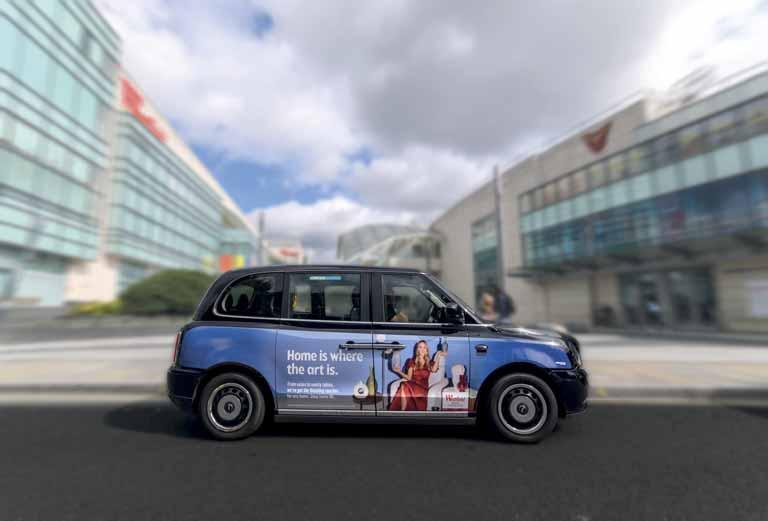



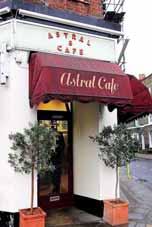
Michael Van Erp has waged war on London’s dangerous drivers. Armed with a GoPro and an e-bike, he has filmed and reported over 2,000 motorists to the police since he started keeping track of their misdeeds in 2019.
Van Erp routinely catches on camera drivers using their mobile phones, pulling out in front of him, cutting up or close-passing cyclists and once, memorably, inhaling nitrous oxide at a red light. He submits the footage to the Met Police and, after police action has been taken, he uploads it to his YouTube channel, CyclingMikey. Offline, he keeps track of the incidents on a mammoth spreadsheet. As a rough estimate, he tells me, 2,500 penalty points and £150,000 worth of fines have been doled out as a result of his efforts so far.
But he is far from alone. In fact, the 52 year old is one of the growing ranks of do-ityourself cycling crimestoppers fighting back against motorists in a road safety crusade. Like Van Erp, they film drivers and submit the footage to the police on a website set up for citizen reporting – and their interventions lead to tens of thousands of sanctions a year.
This makes Van Erp, in some circles, deeply unpopular. He has been assaulted by drivers for filming through their car windows and is subject to a daily torrent of online abuse.
Kitted out with an action camera mounted on a black baseball cap (he doesn’t wear a helmet, and insists he has done the research to prove there is no safety benefit to doing so), Van Erp patrols the streets of the capital while on his regular commute.
His major coup to date was catching the film director Guy Ritchie – whom he did not recognise until he received a call from the Evening Standard newspaper – texting while driving near Hyde Park in late 2019.
Ritchie pleaded guilty and was disqualified from driving for six months as he already had nine points on his licence for speeding offences. A string of other stars have also been caught out, including exEngland footballer Frank Lampard in 2021 and the
former boxing champ Chris Eubank the year before. (Lampard was charged with using his phone at the wheel but the case was dropped after he hired the solicitor Nick Freeman, also known as “Mr Loophole”, who successfully argued that Van Erp’s footage
filming them through the window (in a manner that some may find sinister) and getting a shot of their number plate. Most are polite when they spot him hovering at their shoulder with a GoPro. Some plead with him – he only very occasionally relents. Others
points and £150,000 worth of fines
Van Erp’s efforts have resulted in 2,500 penalty points and £150,000 worth of fines
Some will get warning letters, some fixed penalties, and some go to court. A small

did not prove the mobile phone was turned on or being used to communicate.)
Similar to Van Erp, Jeremy Vine records his own London cycle commute on a helmet camera and posts the footage on X/Twitter. He has described Van Erp as an “inspiration”. Van Erp has even made friends with some fellow law-enforcing cyclists online and says they occasionally meet up and go to Nandos.
Recording his commute on an e-bike from west London to his workplace in north London (where he is a carer), Van Erp racks up hundreds of hours of footage a year – and inspires an army of fellow camera cyclists to do the same. “Every journey is gigabytes worth,” he says, “so I do have a very large storage system at home – about 150 terabytes worth. Most of it is just backups, because I have to keep the footage for court cases and whatnot.”
A typical video posted on social media sees him spot a driver in or around Hyde Park glancing down at their phone, usually in gridlocked traffic along West Carriage Drive. He parks up his bike and approaches them on foot,
are apoplectic.
Occasionally, he pitches up at a spot in Regents Park, which he calls Gandalf Corner, with the express purpose of catching impatient drivers who think they can get away with making an illegal right turn. This seems to irk drivers the most. The most popular of these clips, which has accrued 5.1 million views and counting, shows one motorist so angry at being stopped by Van Erp that he repeatedly butts him with his Mercedes. Van Erp says the incident resulted in a £50 ticket for the driver for disobeying the rules of the road and a further £90 fine for ramming him with his car.
How many drivers does he catch per day? “If I were to go out looking for it, I could catch 20 or 30, but I couldn’t possibly hope to report that many. Just on my commute, I’m averaging one a day at the moment,” he says, but adds that road safety in the city is “definitely improving”. Perhaps that is because, as a result of his reporting and that of others like him, more and more drivers are feeling the full force of the law.
Van Erp’s efforts have resulted in 2,500 penalty
West Midlands has set up a dedicated portal for members of the public to submit their videos, called “Operation Snap” or Op Snap. A list of the kind of offences to look out for includes dangerous driving, using a mobile phone, not wearing a seatbelt or failing to stop at a red traffic light. The force has published a 25 page document of sanctions from April 2024 alone. The reports within it are not all from cyclists – many are based on dashcam footage from fellow drivers.
“Around 90 per cent of the submissions we get end in positive action. That can be everything from a warning letter up to prosecution and a day in court,” says Sergeant Steve Evans, who leads the ‘Op Snap’ team for West Midlands police. “It doesn’t take long to do, and people who do take the time to send us their clips are making a real difference to road safety. Every one of the people who’ve been filmed like this and have had to pay the price should now be thinking again about the way they drive.”
percentage of those plead not guilty or do not accept Van Erp’s written statement, in which case he has to attend court in person. “I’ve been to court between five and 10 times this year, which is not too bad,” he says. “It’s less than one per cent of the cases I report, thank goodness.”
The purpose of posting on social media is to show other cyclists they can do the same, he explains. “I think on my own I’m probably doing very little… but through social media I think that is having an effect, because it is making drivers worry about being caught, and it’s encouraging other people to report,” he says.
In turn, police forces say this is having a tangible impact on convictions for dangerous driving. Take the figures from just one police force: in 2017, West Midlands police had 208 submissions from people filming dangerous drivers. Last year, that number had risen to 7,145. In the past 12 months it has risen again, to over 11,000. Nationwide, police forces in England and Wales receive 150,000 such clips from the public per year, with an estimated 90 per cent leading to driver sanctions.
For Van Erp, success in bolstering road safety comes at a price. He is frequently called a “cyclist vigilante” – a term he despises – and much worse. “I don’t feel like I’m a vigilante, because I’m not bringing any punishment to the drivers. The only thing that’s slightly close to vigilantism is when I stop drivers at Gandalf corner,” he says. “But even then, I’m not doing it to punish them. I’m doing it to stop the immediate danger they pose of going round that corner on the wrong side of the road.”
In a newspaper column, Jeremy Clarkson called Van Erp “the most dreadful man in Britain today”. “The abuse is insane,” Van Erp says. “There was an [online] poll where they voted me worse than Hitler. It used to bother me a lot because I wasn’t hardened, and I took it more personally. Now I don’t even look at it.”
Yet it has also won him fans. When we meet outside The Telegraph’s office, Van Erp has not even had a chance to lock his bike up before being approached by a young man who watches his videos on YouTube. “Keep up the good work,” he says.
Courtesy of The Telegraph
The black cab trade at Heathrow is under attack like never before, and the absence of a properly constituted Taxi Governance Group is costing us dearly. Despite years of discussions and the same familiar faces, the issues continue to pile up—and the lack of a unified, strong voice is leaving us defenceless.
The LCDC has been the only voice at Heathrow standing up to the Surface Access Transport Strategyplans that threaten to place Uber and Bolt pick-up points right next to the taxi ranks outside the terminals. These same strategies are being rolled out worldwide, including across the UK, and yet the rest of our supposed trade leaders remain silent, doing nothing to halt this encroachment on our work.
Make no mistake, Uber isn’t just targeting private hire. They’re aggressively signing up taxis across the globe, with the clear goal of dominating the global transport market. Some of us may be lured into their net by cut-rate fares, but the bigger picture is much more sinister. In the end, they will take over, leaving us with less work and more competition right on our doorstep.
Closer to home, apps like Gett and Free Now are already eating into our livelihoods. They offer discount fares, while taking up to 20% of the driver’s earnings. Passengers often end up paying more than they would at the rank, but the damage is done—the work that should be ours is being siphoned away. Meanwhile, the launch of the Elizabeth Line has further eaten into our business at Heathrow, yet again eroding the work that rightfully belongs to us. You only have to watch how quickly the Taxi Feeder Park empties when either the Heathrow Express or the Elizabeth Line experiences delays.
HAL’s plan to move taxis into a Short Stay Car Park at Terminal 4 was successfully resisted by the LCDC.
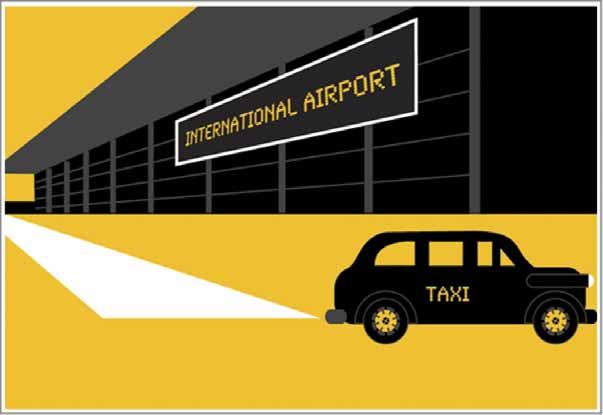
by Mark White
However, HAL’s response is to now propose an additional AVA Car Park on the Southern Perimeter for PHVs to serve Terminals 4
and 5. This will only worsen an already dire situation. Touts and PHVs continue to poach fares right under our noses, and enforcement is
practically non-existent. The terminal forecourts are swamped with private hire vehicles, but where is the leadership to stop this?

What’s truly shameful is the complete lack of unity within our trade. The LCDC has repeatedly called on trade reps to set aside petty squabbles and come together to form a proper Taxi Governance Group, but these calls are continually ignored. Unite and the LTDA refuse to communicate with each other, yet they’re more than willing to engage with HAL separately, undermining any hope of a united front. Meanwhile, others are burying their heads in the sand, focusing on irrelevant issues like the distribution of Tags while ignoring the real problem: the urgent need for taxi desks that could protect the work our drivers deserve.
The reality is crystal clear: there is no leadership. The black cab trade at Heathrow is being dismantled while those who claim to represent us bicker and jockey for position, doing nothing to stop the erosion of our work. Office space that was meant to be used for a Taxi Governance Group is instead being occupied by a handful of LTDA members, who use it rent-free, while the rest of us are left paying for it. Meanwhile, Unite has set up a largely unused library, despite having a multi-
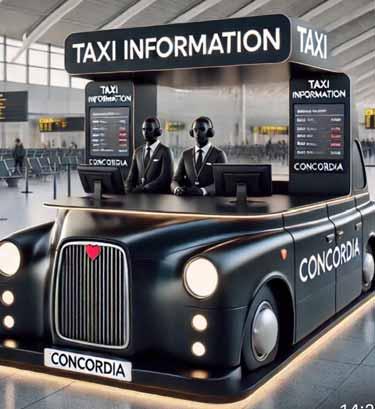
million-pound building on the Bath Road. These trade reps seem more interested in protecting their own interests than fighting for the drivers they’re supposed to represent.
Unite the Union—ironically
There seems to be some confusion around Heathrow’s Taxi Feeder Park (TFP) and the issuing of Tags, especially with some calling for Trade Organisations to step in –including some former union officers. Let’s clear things up.
Heathrow Airport Limited (HAL) made the decision to stop issuing Tags to drivers without any warning to the Taxi Trade. They didn’t consult, negotiate, or even give us a heads-up. They simply imposed a ‘one in, one out’ policy for drivers needing replacement Tags or signing up for the TFP. To be clear, HAL, via APCOA who manages the TFP, is solely responsible for issuing Tags – not the Trade Organisations.
named—has been part of the problem, not the solution. The HUTG has failed us miserably. They’ve allowed Uber, Bolt, and PHVs to take more and more of our work, forcing us to work longer hours for less money. Heathrow Airport
Before the pandemic, HAL had already flagged a shortage of Tags and offered £10, plus unspent credits, to drivers willing to return theirs. For years, any licensed All London driver who passed the Knowledge could get a Tag free of charge. But some drivers didn’t value their Tags, claiming they’d lost them or left them in rental cabs, repeatedly asking for replacements. The cost of those Tags came out of the gate fees, meaning all drivers ended up footing the bill every time they entered the TFP.
Then, the Civil Aviation Authority (CAA) stepped in, demanding HAL justify every cost as the fees rose to £6. It turned out we were being charged for things like emergency services, which the CAA deemed unreasonable. As a result, the fee was reduced, and the trade received a refund. HAL also resurfaced the TFP,

Limited continues to side with private hire, setting up spaces and systems that benefit them while leaving us out in the cold.
The situation is critical. If we don’t establish a unified body to represent the black
calling it a capital investment. However, they then began charging for Tags, and as the cost of the outdated technology increased, so did the price.
In a bid to reduce queues at the barriers – where drivers were topping up their credits one unit at a time, causing hold-ups – Heathrow, with trade input, introduced maximum and minimum credit amounts for Tags. This was also to prevent drivers from sharing units.
When the Taxi Trade was moved from the old Feeder Park (now the AVA) to the current site, there were no neighbouring businesses or AVA Car Park. But over time, complaints from those businesses to the Police about taxis blocking access led to HAL taking action, even threatening to stop the Local Journey System if drivers didn’t comply with their behaviour bylaws. This resulted in the Warden
cab trade at Heathrow, Uber and Bolt will soon be dominating the pick-up points outside the terminals, leaving us fighting over scraps. The threats are increasing, the competition is intensifying, and every day we delay, we lose more ground.
scheme and the decision to stop issuing new Tags.
As for those making noise about Tags now, where were the loud voices when the AVA Car Park issue arose? They were vocal on social media, but did nothing. And despite Heathrow’s Surface Access Strategy outlining plans for Uber and PH, those same voices remain silent. They’ve not even responded to consultations or emails. Don’t just take my word for it – ask them what they’ve done to challenge Uber’s pick-up points, desks, or improved signage at the terminals.
Or is it all just talk on social media?
Regarding the TFP, we’ve been told that a new Taxi Expert system is in development, supposedly set to run through an app with more modern Tag technology. It was meant to be trialled over the summer,
The time for infighting is over. It’s time for action. The black cab trade at Heathrow desperately needs real leadership and a strong, united voice. Without it, our future hangs in the balance.
but we’re still waiting for updates.
There are five taxi trade groups operating at Heathrow, collectively referred to by HAL as the ‘Taxi Governance Group’. These include the LTDA, Unite, UCG, RMT, and LCDC—the only ones who regularly report on airport matters in this paper. Decisions aren’t made by any one organisation, but getting the group to work together as one has proven difficult. In fact, I’ve given up on that challenge altogether.
If drivers want Taxi Desks in the terminals, they should reach out to the other members of the ‘Taxi Governance Group’ and push for it to become a properly constituted body. The Canteen office space should be used for this purpose, rather than being reserved for just a couple of organisations and their members.
It is a suspicion that will be familiar to anyone who has driven a car for more than ten minutes in London. When trying to navigate the maze of one-way streets, bus lanes, and low traffic neighbourhoods – not to mention the congestion charging zone and the ultralow emissions zone (ULEZ) for older vehicles – it feels impossible to get it right. Are they actually wanting you to get it wrong, so they can pick up the income from the penalties?
Early figures from Transport for London’s (TfL) next set of annual accounts, obtained by the Press Association, certainly suggest this might be the case: revenue from what TfL euphemistically calls “road network compliance income” hit just under £90 million last year, up from just under £57 million five years ago.
That does not include income from people actually paying the congestion charge, which was £358 million in the last published accounts, or the ULEZ charge (a hefty £480 million) – but instead is just the money TfL has pocketed from fining misbehaving motorists. It also is not a count of the total cost of traffic tickets in London.
TfL is only responsible for fines on London’s 367 miles of “red routes”, those deemed critical to keeping the capital moving. Other roads are outside of its remit.
The income from these routes, though, is a rare ray of sunshine in what has been a tough few years financially for TfL, which is responsible for all of London’s public transport and which oversees its road network too.
A huge drop in passenger numbers during Covid persisted for longer than expected due to many commuters working from home for part of the week postpandemic, while London mayor Sadiq Khan, who chairs TfL, repeatedly clashed with Conservative ministers over the scale of government support needed to get the organisation through a financial squeeze.
Critics of the Labour mayor, including former Tory transport
secretary Mark Harper and mayoral candidate Susan Hall, have accused him of being “unable to balance the books” and “treating Londoners like walking cash machines”.
In recent years, TfL had to endure multiple rounds of cutbacks, and emergency bailouts from central government, not least due to the huge drop in passenger numbers during lockdowns and pandemic-era restrictions.
The deficits were forecast to peak at £1.5 billion during 2020, but these were reduced to £200 million through cost-cutting, scaling back investment, and emergency government funding.
This year, TfL seems to have turned things around with a surplus of £138 million, which will be used to fund investment, though this will amount to a much smaller outlay than the reductions it implemented as part of its bailout terms.
Such a recovery has inevitably prompted accusations from motorists that they are being purposely targeted as a source of income by TfL. “Dick Whittington would now say that London’s streets are paved with fines,” the AA’s head of road policy has said.
Do the motorists have a point? The figures would suggest they do. Back in 2019, when TfL collected £57 million in fine income, that was around 1 per cent of its total revenues. In its latest accounts, TfL’s fine income has risen to 1.5 per cent of its total. That might not sound like much, but it means that where once it was £1 in every £100 TfL took in, it is now £1 in every £65 or so.
One obvious question to ask is why TfL’s income has risen so much – has something happened in London to make people much worse drivers? Part of the answer (some might say the boring part) is simply that TfL has increased the size of the fines for most penalty charge notices.
Until the end of 2021, those who broke the rules would receive a £130 penalty notice, which would be ‘discounted’ to
£65 if it was paid without contest within two weeks of being received. But in January, 2022, that was raised to £160, discounted to £80. This is a fairly sizeable 23 per cent hike, but given it came amid several years of sustained inflation, was roughly in line with other rising prices.
Crucially, it is not anywhere near the overall size of the increase: while each ticket is 23
more about predicting and monitoring traffic flows and looking for incidents, and are not yet used for enforcement.
Regular London drivers know that TfL’s cameras are effective and reliable – but they also know where they are. “It’s all or nothing,” one regular cyclist complains. “You can count on drivers to do the right thing on the junctions with cameras, even at the dead of night,
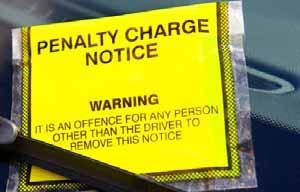
per cent higher, total revenue from tickets is up 58 per cent. TfL is not just charging higher fines, it is issuing more of them. A large part of how it is doing this is simply with better technology.
Almost all of TfL’s traffic cameras are smart. There is no need for human involvement between a driver running a red light, travelling in a bus lane, or some other offence, and a penalty notice landing on their door.
TfL’s traffic cameras are all networked and automated, and all use Automated Number Plate Recognition (ANPR) technology – a basic form of the same kind of AI system that now powers ChatGPT and other cutting-edge AI systems –to read the registration plate.
This is automatically crossreferenced against databases and used to auto-generate a letter. If you incur a fine in London, there is every chance the letter letting you know has been generated before you even get home. According to one insider, TfL does have some cameras set up with more advanced AI, some of them experimental, but these are
because they’ll be fined. But if they know there’s no cameras there, it’s as bad as ever.”
This is where TfL seem to have deployed a secret weapon in recent years, and one that might account for their bumper income from fines: It has managed to make its high-tech cameras mobile, too.
It began rolling out just five mobile laser cameras in January 2022, and even with so few devices managed to issue 50,000 fines from them in their first year of operation alone. The mobile cameras are particularly focused on speeding, which was made a priority for TfL in 2018. The organisation’s own statistics show a huge increase in speeding fines since it rolled out that new plan – it issued 160,000 speeding tickets in 2018/19, which rocketed to 650,000 by 2022/23.
A common grumble among motorists is that they are being targeted for revenue that mostly does not benefit them, as it’s used to fund the underground and London buses. TfL does try to enforce fare-dodging on these services, but it’s a much
harder task, even with the technological advancements of recent years – such as facial recognition.
TfL did carry out a pilot with cameras using artificial intelligence in one station last year, Willesden Green, focusing on fare evasion. Automatically issuing fines is much more difficult in this scenario, though, as there is a much higher error rate on facial recognition than number plate recognition, and fare dodgers by definition do not tap in with a card that might confirm their identity either. Instead, the tech was used to try to identify the most frequent offenders to take action against them, which might reduce fare dodging, but which is unlikely to become the same kind of money spinner as fining motorists.
TfL needs more money from as many sources as possible to keep operating and to keep fares low, which it argues is essential to keep London attractive to businesses and to tourists. Almost every source of revenue will prove unpopular with someone – but there is, on paper at least, one place it could collect money.
Data obtained by Substacker and transport expert James O’Malley shows that TfL is owed more than £100 million in unpaid fees and fines from a small group of serially offending motorists, money it has perpetually failed to rake in.
That’s because those offenders have diplomatic immunity. TfL does not exempt embassies or their staff from the congestion charge or from other fines, but it is unable to go to court to enforce penalties in such instances, so many of those charged simply ignore the sanctions.
That means that embassies owe huge sums in backdated fines. Top of the offending list is the US embassy (£14.6 million), embassy of Japan (£10 million) and the office of the Indian high commissioner (£8.6 million). TfL’s cameras might be hard to escape, but at least there’s one hope – you could always marry a diplomat.
Courtesy of The Telegraph

I was lucky enough to get a ticket for the 90th birthday celebrations for the artist Sir Peter Blake, held at the Royal Festival Hall in December 2022.
Among the line-up of musical acts performing that night, were Madness, The Who, Baxter Dury, Paul Weller, Noel Gallagher and Chrissie Hynde. For me, and many others from what I heard after, Chrissie stole the show by performing the theme tune of the TV show Minder, I Could be so Good for You, originally sung of course by one of the stars of that show, Dennis Waterman, who Chrissie also declared on the night, she fancied like mad.
The man himself was born on February 24, 1948, in Clapham, South West London, the youngest of nine kids raised by Harry and Rose Waterman. Harry, worked as a sheet metal worker and on the railways, Rose as a dedicated housewife, who had her hands full obviously.
Boxing was an early passion in the family, with dad Harry a keen amateur and brother Peter a British Welterweight champion. Dennis himself boxed from the age of three, going on to represent the Caius Boxing Club.
Waterman attended the Granard Primary School on the Ashburton Estate in Putney, followed by the Corona Stage School, an independent school at Ravenscourt Park in Hammersmith. Fellow actors to emerge from there over the years include Ray Winstone and Nicholas Lyndhurst. Dennis’s early exposure to the arts, sparked his passion for acting and singing.
In 1960, at the age of 12, he made his acting debut in the film Night Train for Inverness. His talent was evident even at such a tender age, and he went to make appearances in various films, television and stage shows during his teenage years. Parts included a season with the Royal Shakespeare company , starring as William Brown in Just William on the BBC and as Oliver Twist in an early production of Lionel Bart’s Oliver at the Mermaid Theatre . You’re the only beautiful thing round here princess


His first major film role came in Nell Dunn’s Up The Junction as Peter, a second hand furniture salesman. In it he played the boyfriend to Polly played by Suzy Kendall. Manfred Mann supplied the soundtrack and Peter Collinson directed.
He came to national TV prominence in the mid 1970s when he was cast in the gritty British television series The Sweeney as Detective Sergeant George Carter alongside his guvnor, played by John Thaw as Detective Inspector Jack Regan. The show gained
immense popularity for its realistic portrayal of the work undertaken by the Flying Squad of the Metropolitan Police who had picked up the cockney rhyming slang name of Sweeney Todd, hence the title of the programme.
Waterman’s portrayal of Carter was a turning point in his career, and it solidified his status as an actor capable of tackling complex roles. His on-screen chemistry with John Thaw was palpable, and the show became a cultural phenomenon in the UK, a status which survives to
this present day due to the constant re-runs of the episodes.
Watch him George, he’s hard enough to roller skate on.
Following the success of The Sweeney, Waterman continued to build on his reputation as one of Britain’s most beloved actors. In 1979, he took on the role of Terry McCann in the iconic television series Minder, also made by Euston Films, who had devised The Sweeney. The show, which ran for a decade
until 1989, featured Waterman as a likeable, small-time crook turned bodyguard, employed to protect a rascal called Arthur Daley, played majestically by the wonderful George Cole. The on-screen partnership was a highlight, with much of the witty banter contributing significantly to the programme’s enduring popularity, by being repeated at many a school playground and workplace lunch time, the following day.
Don’t worry my son, from now on, the world is your lobster Minder not only showcased Waterman’s acting prowess but also allowed him to flex his musical talents. He recorded the show’s memorable theme song, I Could Be So Good for You written by his then wife Patricia Maynard and Gerard Kenny, which went on to become a top three hit in the UK.
Away from the camera, it is said he had his struggles with alcohol and became tabloid fodder on more than one occasion due to his personal life, especially when married to actress Rula Lenska. Domestic violence was reported in 1987 which Waterman discussed openly on chat shows.
His other notable TV, film – he made 28 in total – and stage work include Colditz, On the Up, Stay Lucky, New Tricks, The Life and Loves of a She Devil, Windy City, My Fair Lady, Minder on the Orient Express, Jeffery Bernard is Unwell and The World Cup : A Captains Tale – the true story of West Auckland Town FC who won the Sir Thomas Lipton cup, also thought of as the first World Cup, not once but twice in 1909 and 1911. It was reported that most of its £1.5 million pound budget was funded by Waterman himself.
Dennis worked here and there up until around 2020, and then semi-retired to live in La Manga in Spain. He died from lung cancer on 8 May 2022, aged 74.







By Steve Bunce
Smart fighters win rematches, which could be a problem for Tyson Fury in late December when he fights Oleksandr Usyk again, following last May’s defeat in Riyadh.
The great American boxing trainer and guru Manny Steward put forward the idea that in any rematch, the smart boxer, having lost the first fight, will win the second fight. It was one of Steward’s cherished little gems, one dependent on one of the boxers being smarter than the other – that is the problem for Fury: Usyk is his equal in the boxing brains department.
Steward talked about his theory one night in Las Vegas, a few days before Lennox Lewis met Hasim Rahman in their hot rematch; seven months earlier in 2001, Rahman had shocked the boxing world by dropping and stopping Lewis in South Africa. The defeat was stupid, the revenge was clever.
Lewis, who passed on his undisputed champion mantle to Usyk in May, had already changed the result in two rematches before he climbed through the ropes and knocked out Rahman in four rounds at the Mandalay Bay. In 1997, Lewis beat Oliver McCall and two years later in 1999, Lewis outpointed Evander Holyfield. In the Holyfield rematch, Lewis was smarter; in the McCall rematch, Lewis was simply coherent.
Fury has a significant win in a rematch on his record, but it had little to do with being smart, boxing sensibly and being slick; in 2020, two years after their hard draw, Fury walked through Deontay Wilder in seven brutal rounds. It was one of the most outrageous changes in tactics in any rematch ever. Some might claim it was a smart move, a brilliant switch of tactics, but it was so risky. It showed Fury’s ability to stick to a plan and that is something that Usyk must be mindful of when the first bell sounds.
In the second Wilder fight, Fury was a different person,

and Wilder had no idea how to deal with the man in front of him. Wilder was saved from his own bravery. Their third fight was just a ridiculous war, and both came close to losing before it finished in the 11th when Fury dropped Wilder for the third time. It was about guts and heart, not boxing brain, in that incredible third fight.
to argue that his second win over Anthony Joshua was not as clear as his initial victory. In their first fight, outdoors at Tottenham Hotspur in September 2021, Usyk boxed with sense and caution and won a unanimous decision. The
The rematch was just under a year later, in Jeddah. This time, Joshua made some changes and it was closer; Usyk won a split decision but it was not as clear. In all fairness, Usyk just repeated the formula from the first fight

Usyk also has an important rematch win, but it is possible
scores were by five, four and two rounds in his favour. On the night, Joshua experimented with a variety of styles and fell short. The fight remains an oddity.
and that same approach could be enough when the first bell sounds on 21 December for the rematch –all the pressure is on Fury to change the outcome. The
pair will meet in London on Wednesday to officially launch their second showdown.
There is a solid case that SugarHill Steward and Andy Lee, the cornerman duo from the second Wilder fight, will get Fury to be more aggressive and go for Usyk from the very first bell. In the months before the Wilder rematch, Lee and Steward had said that their boxer would walk through Wilder with two-fisted aggression; nobody really believed them. The same could happen –perhaps, the same should happen – in Riyadh.
One of the differences between Wilder and Usyk is that Usyk can adapt; on the night in Las Vegas when Fury charged out and just let his hands go, Wilder was trapped in a web of his own technical shortcomings. Usyk can survive a charge like that, move, hold and use his ringcraft. It’s not simple beating Usyk but Fury is both big enough and smart enough to apply the right type of pressure. However, Fury is nearly five years older and that matters. It is not an easy fight to predict.
MORE THAN FORTY businesses are urging the Mayor of London to extend the congestion charge exemption for electric vans.
Drivers of electric vans currently receive a 100 percent discount on the capital’s congestion charge, but their special status is set to end by Christmas 2025.
Signatories of an open letter to Sadiq Khan urging a rethink include the AA, Ocado, Openreach, Lime and the Federation of Small Businesses, who say the change will inflict an “astronomical cost” of £5,500 per vehicle per year on London’s firms.
Led by campaign group Clean Cities, supporters of the exemption argue it has played a “fundamental role” in easing the cost of investing in environmentally friendly fleets. Abolishing it would undermine firms who have “taken on debt to invest in the air we breathe”.
The latest data shows that battery electric vans still account for fewer than 3 percent of all vans registered in London while 67 percent of Londoners believe small businesses still need more support to help them switch to electric vehicles. Out of the estimated five million SMEs
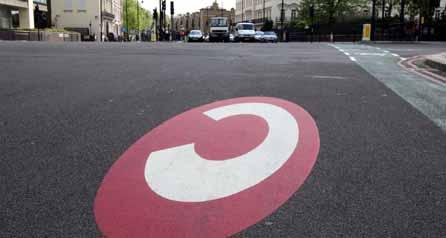
operating in the UK, one million are based in London1.
Today’s letter coincides with a new report published by Clean Cities, which shows 20 Dutch cities - including Amsterdam, Rotterdam, and Utrecht - are leapfrogging London by implementing zero-emission zones for freight from next year through private and public partnerships. It is unsurprising that electric van sales in the Netherlands were around twice that of the UK in 2023.
Dutch city governments have implemented ‘zero-emission zones’ for freight from next year through private and public
partnerships. In consequence, electric van sales in the Netherlands were around twice that of the UK in 2023.
Clean Cities launched Clean Cargo Capital in August, a campaign focused on accelerating the uptake of electric or pedal-powered commercial vehicles in London.
Oliver Lord, UK Head of Clean Cities, said, “The Mayor has taken ambitious and successful measures to tackle air pollution in London but scrapping this exemption is at odds with his track record and his commitment on climate.
“Ultimately, small businesses are those set to suffer the most, with the progress towards a cleaner, electric future choked off in an economic situation already fraught with challenges.
“How is it right that a dirty diesel van pays the same as a cleaner electric vehicle in the most polluted part of the UK? This defies logic and the best international practice. Now is the time for the Mayor to cement his efforts for change by maintaining the exemption and working on a broader package of support for green freight in the capital”.
Edmund King OBE, President
of the AA said: “Much has been done in London over the last few years to improve air quality and this should be applauded. Ten years ago, it was common to blow your nose and fine black particulates on your handkerchief. This has thankfully changed.
“However, cutting the congestion charge discount for electric vans is a detrimental policy which could backfire on the health of Londoners and the economy of London. We still need to encourage zero emission transport rather than deter it.”
Laura Timm, Federation of Small Businesses, London Policy Chair said: “Small firms all over London have faced a ‘cost of doing business crisis' for the best part of a decade and many have “done the right thing” and invested in green initiatives within their business. For businesses who have purchased electric vans they should be supported and not be at risk of losing the Congestion Charge exemption on Christmas Day 2025.
“We urge the Mayor of London and TfL to maintain this supportive measure for businesses as it sends the right signal to struggling small businesses.”
By Political Officer
Dan O’Regan
On October 21, 2024, the UK Parliament held a debate on issues impacting the taxi and private hire vehicle (PHV) sector, specifically addressing concerns important to London’s Black Cab drivers.
One key topic was the ongoing problem of cross-border hiring, where drivers licensed in one area operate in another. MP Tanmanjeet Singh Dhesi (Slough) voiced concerns about this practice, citing that local authorities struggle to enforce standards for vehicles and drivers not licensed in their jurisdiction. He argued that this loophole undermines passenger safety and called for stronger enforcement to address these challenges.
Transport Minister Richard Holden acknowledged these concerns but highlighted that restricting cross-border hiring could inadvertently reduce service availability, increase fares, and lead to “dead miles” (when taxis travel without passengers), affecting drivers’ income. He emphasized that any regulatory reform must balance the interests of drivers, passengers, and authorities.

MPs from various regions raised concerns about the
rising costs for drivers, particularly around insurance. In response, Holden recognized the growing financial pressures on the industry and promised ongoing dialogue with stakeholders to find a solution that ensures fair competition, protects passengers, and supports drivers’ livelihoods.
The debate also touched on the broader impact of the Deregulation Act 2015, which many feel has contributed to the fragmentation of licensing across the country. While no immediate legislative changes were confirmed, the discussion reinforced the need for future
regulatory adjustments to address enforcement inconsistencies and improve safety without harming drivers’ ability to operate.
This debate signals that changes may be on the horizon for London’s taxi industry, with a focus on fairer regulations, enhanced safety, and continued viability for drivers.
For further details, you can read the debate transcript here.
https://www.theyworkforyou.co m/debates/?id=2024-1021c.152.0

All under one roof
• Exclusive Insurance schemes
• Breakdown cover only £99
• Roadside assistance and recovery
• Recovery to any UK Location